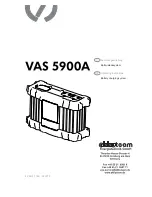
5
Introduction
This all new single board design incorporates state of the art switchmode technology for
unmatched efficiency and ultra-quite operation. Multiple stages of filtering reduce radiated or
conducted noise to very low levels. Extra features include adjustable output voltage, audible
and visual indicators for low input voltage, low output voltage and over temperature. Safety
features include reverse input protection, over-temperature shutdown, current limiting, and
short circuit protection with automatic recovery, input undervoltage shutdown, reverse battery
protection and output overvoltage crowbar. Optional features include a dry contact alarm relay
output, and remote panel monitoring with On/Off control.
Features
In a DC UPS ( Un-interruptible Power Supply ) , the charger simultaneously powers the DC load
as well as the battery. As long as the AC power to the charger is available and the charger is
working normally, the charger will supply the DC load as well as charge / float the battery. In
case the AC power fails or if the charger stops working, the battery will automatically power
the DC load. As soon as the AC power to the charger is restored, the DC load will once again
be fed by the charger and at the same time the battery will be recharged.
CAUTION!
Please ensure that the sum of the current drawn by the DC load and the current
desired for charging the battery is less than the maximum current capacity of the charger. To
use as a DC UPS, first switch off the DC load and connect it to the battery. Now connect the
battery. Switch on the charger and then switch on the DC load.
Examples of devices considered to be life support devices are neonatal oxygen analyzers,
nerve stimulators (whether used for anesthesia, pain relief, or other purposes), autotransfu-
sion devices, blood pumps, defibrillators, arrhythmia detectors and alarms, pacemakers,
hemodialysis systems, peritoneal dialysis systems, neonatal ventilator incubators, ventilators
for both adults and infants, anesthesia ventilators, and infusion pumps as well as any other
devices designated as “critical” by the U.S. FDA.


































